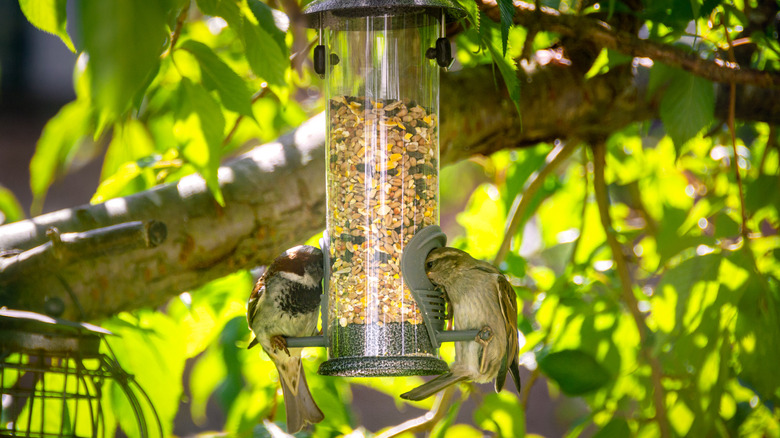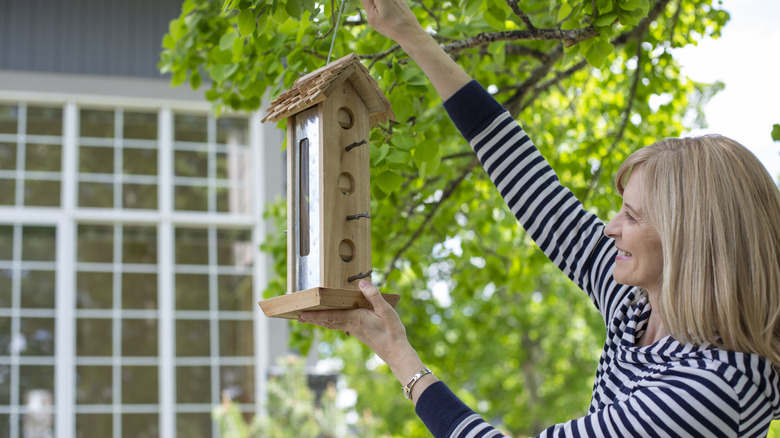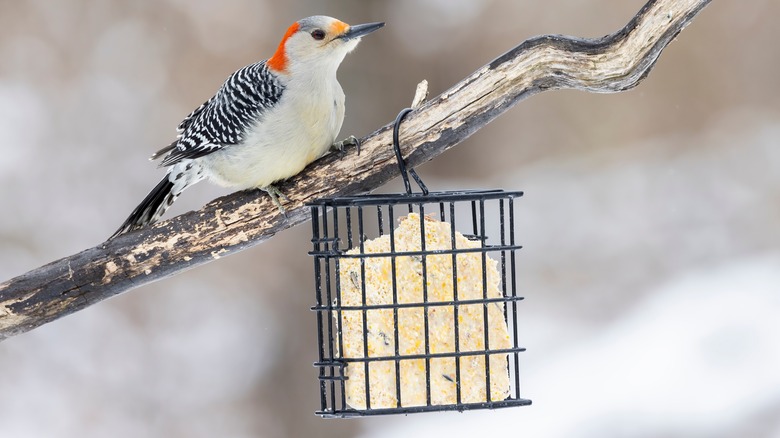Your Bird Feeder Might Not Be Properly Stocked Based On The Seasons
Just as humans often change their diet preferences based on the seasons and weather, many animals like to do the same. Watching birds thrive in your garden is one of life's best simple pleasures, and attracting birds to your yard isn't usually too tricky, but there are certain types of foods you can offer that will help them stay healthy and return to your feeder all year long. Generally speaking, cold fall and winter days require extra calories, while warmer spring and hot summer days call for light treats and extra hydration.
But, how exactly are you supposed to determine the best type of food for birds depending on the seasons? We will consider what you should be feeding your backyard birds in spring, summer, fall, and winter, along with other helpful offerings, and some additional bird knowledge that will help you understand their dietary needs throughout the changing seasons.
Seeds and sweets during spring and summer
To determine what to feed birds, it's important to understand how they're burning calories. In spring and summer, most birds stay quite active looking for mates, building nests, and raising offspring. During spring, nearly any type of birdseed will attract songbirds to your yard. Fresh fruits like grapes, apples, and berries, and baked crushed eggshells are also appealing and provide a boost of hydration and calcium for healthy egg production. Spring is also a great time to offer natural nesting materials like straw, moss, pine needles, pet fur, and down feathers.
In summer, birds will appreciate mealworms, sunflower seeds, and fruits but they may not be necessary. That's because many birds, like cardinals, will supplement their diet with insects during the peak of summer breeding season, and will also feed insects to their babies. Birds can almost always find something to eat during spring and summer, but finding clean water isn't always so easy. To attract birds in summer, provide plenty of fresh water and avoid using insecticides as much as possible. You may also want to install a hummingbird feeder with homemade hummingbird nectar. Avoid suet and other high-fat treats during spring and summer, as the calories are unnecessary and the fatty ingredients may spoil in the heat.
Fattening foods during fall and winter
Generally, birds will become less active as the weather starts to cool. By fall, young birds have left the nest to strike out on their own, and many migrate south, while others hunker down and prepare for winter. To help them, stock up on high-protein and high-fat foods like sunflower seeds, cracked corn, nuts, and millet. As summer fades to fall, begin mixing these into their seeds or give them a choice of two options. These high-calorie foods will help them store fat – some birds need to double their weight in preparation for winter! Birds like jays, chickadees, woodpeckers, and titmice will cache away seeds and nuts in the fall to dig out later.
In winter, birds will appreciate nearly anything you have to offer, but you can make the visit to the feeder more worth their while by offering nutritious foods. Winter is the best time for peanuts and peanut butter which contain a high amount of fat. Suet blocks are also an excellent option in winter, typically formulated with rendered animal fat, cornmeal, seeds, nuts, and dried mealworms. While water may seem more available in fall and winter, much of it is frozen, so it's still good to put out fresh water in a solar-powered heated dish.


